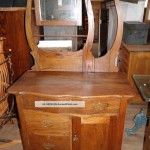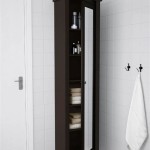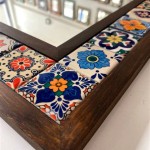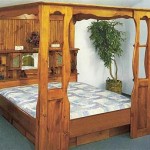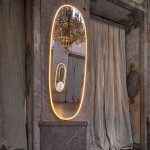Floor To Ceiling Mirrors Cost: A Comprehensive Guide
Floor-to-ceiling mirrors have become increasingly popular in interior design, offering a visual expansion of space, improved natural light distribution, and a touch of elegance. Understanding the costs associated with installing these mirrors is crucial for homeowners and designers looking to incorporate them into their projects. This article provides a detailed breakdown of the factors influencing the cost of floor-to-ceiling mirrors, offering insights into budgeting and material selection.
The overall cost of floor-to-ceiling mirrors is influenced by a multitude of variables. These include the size of the mirror, the type of glass used, any decorative features incorporated, the complexity of the installation, and the geographical location where the installation is taking place. A precise cost estimate requires careful consideration of each of these elements and obtaining quotes from multiple reputable installers.
Size and Dimensions: The Primary Cost Driver
The most significant factor determining the cost of a floor-to-ceiling mirror is its size. Larger mirrors necessitate more material, directly increasing material expenses. The dimensions, specifically the height and width, dictate the surface area of the glass needed. The price of glass is typically calculated per square foot or square meter.
Furthermore, the size affects the handling and installation process. Larger mirrors are heavier and more cumbersome to manage, requiring specialized equipment and a larger installation team. This translates to higher labor costs due to the increased complexity and time involved in ensuring a safe and secure installation.
It is also important to consider the impact of oversized mirrors on transportation costs. Transporting large panes of glass requires specialized vehicles and careful handling to prevent breakage. These additional logistical requirements contribute to the overall expense.
Glass Type and Features: Balancing Aesthetics and Functionality
The type of glass used plays a crucial role in determining the cost and aesthetic appeal of a floor-to-ceiling mirror. Standard float glass is the most common and affordable option, but other specialized types of glass offer enhanced features and potentially higher costs.
Tempered glass, for instance, is significantly stronger and more resistant to breakage than standard glass. If it does break, it shatters into small, relatively harmless pieces, making it a safer option, particularly in high-traffic areas or homes with children. However, tempered glass is more expensive due to the additional manufacturing process it undergoes.
Low-iron glass, also known as ultra-clear glass, offers exceptional clarity and minimal color distortion. This type of glass is ideal for applications where true color representation is essential. While it provides a superior aesthetic, low-iron glass is considerably more expensive than standard float glass.
Beyond the basic glass type, additional features can further influence the cost. These might include tinted glass, which can add a decorative element and reduce glare, or reflective glass, which can enhance privacy. Beveled edges, polished edges, and custom shapes also add to the cost, as they require specialized fabrication techniques.
The thickness of the glass is another important consideration. Thicker glass is more durable and less prone to warping, particularly in larger installations. However, thicker glass is also heavier and more expensive, increasing both material and installation costs.
Installation Complexity and Labor Costs
The complexity of the installation process significantly impacts the overall cost. A straightforward installation on a flat, prepared wall will typically be less expensive than an installation that requires modifications to the wall, dealing with uneven surfaces, or working around existing fixtures and structures.
Labor costs are directly proportional to the amount of time and expertise required for the installation. Experienced installers with specialized equipment will typically charge more than less experienced individuals, but they can also ensure a higher quality installation and minimize the risk of damage or future problems.
Frameless mirrors often require meticulous leveling and precise installation to achieve a seamless appearance. This is particularly true for large, floor-to-ceiling installations, where even minor imperfections can be highly noticeable. Framed mirrors, on the other hand, can offer a slightly more forgiving installation process, as the frame can help conceal minor imperfections.
Consideration must also be given to any necessary wall preparation. If the wall is uneven, damaged, or not properly prepared, additional work will be required to ensure a smooth and stable surface for the mirror. This might involve patching holes, leveling the wall, or applying a sealant to prevent moisture damage.
The location where the mirror is being installed can also influence labor costs. Installations in hard-to-reach areas, such as upper floors or tight spaces, may require additional time and effort, leading to higher labor charges.
Furthermore, any necessary permits or inspections can add to the overall cost. Local building codes may require permits for large mirror installations, and inspections may be necessary to ensure compliance. These regulatory requirements can vary depending on the location.
Cost also varies on the installation method. Mirrors can be glued directly to the wall, attached with clips, or installed using a combination of both methods. Direct gluing is a simpler process, but it makes future removal more difficult. Clip attachments offer more flexibility for removal and adjustments, but they can be more time-consuming to install and might not be suitable for all types of walls.
Some installers may also offer additional services, such as mirror removal and disposal, which can add to the overall cost. It's crucial to clarify what services are included in the quote and what additional fees may apply.
Geographic location plays a considerable role in the final price. Areas with a higher cost of living tend to have higher labor rates for installation services. Additionally, the availability of materials and suppliers can influence the price. In more remote areas, transportation costs for materials may be higher, leading to increased overall expenses.
Seasonality can also affect pricing. During peak renovation seasons, such as spring and summer, demand for installation services tends to be higher, potentially leading to increased prices. Scheduling the installation during off-peak periods may offer opportunities to negotiate lower rates.
The reputation and experience of the installer also factor into pricing. Established companies with a proven track record of quality workmanship and customer satisfaction may charge more than less experienced or unknown installers. However, investing in a reputable installer can provide peace of mind and ensure a professional and long-lasting installation.
Warranties offered by the installer can also influence the overall cost. Installers who provide warranties on their workmanship and materials may charge more upfront, but they offer added protection against potential defects or installation errors. This can provide valuable security and potentially save on future repair or replacement costs.

Buy Glassless Mirrors On Wheels Gym Mirror For Weightrooms Portable And Rollable With Plexiglass Options Ballet Theater Ion

How Much Do Custom Glass Mirrors Windows Cost Merrimack Valley Mirror

Ceiling To Floor Hallway Wall Mirrors Osborn Glass

Buy Glassless Mirrors On Wheels Gym Mirror For Weightrooms Portable And Rollable With Plexiglass Options Ballet Theater Ion

Custom Home Gym Mirrors Creative Mirror Shower

Quality Fitness Mirrors Large Wall Studio

Garage Gym Mirrors Where To Buy Affordable Large

Custom Home Gym Mirrors Creative Mirror Shower

Diy Project Removing Floor To Ceiling Mirrors From A Wall In Our House S Dining Room Jeff Geerling

How Much Does It Cost To Remove A Wall Mirror 2024 Data

